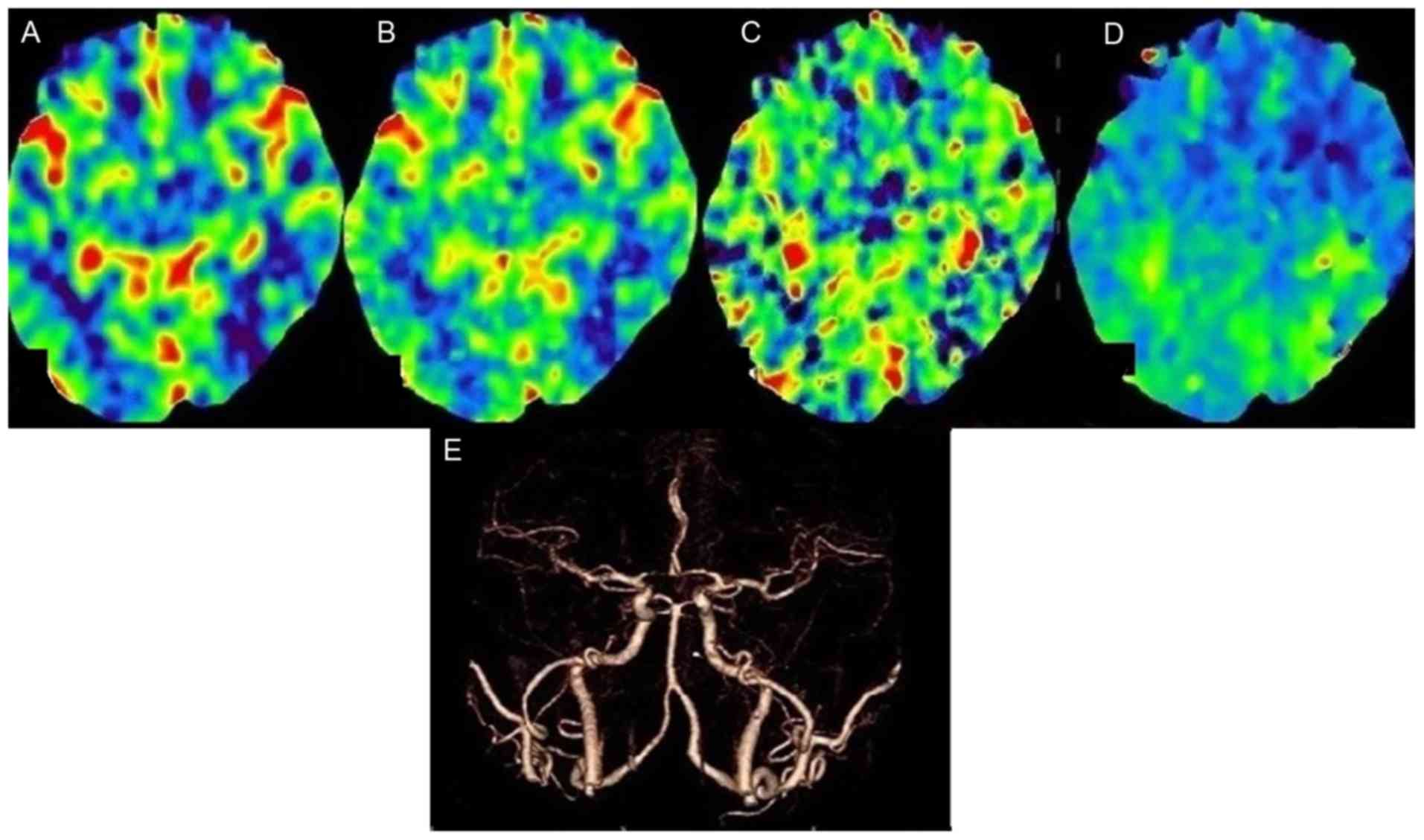|
1
|
Jeng JS and Yip PK: Epidemiology of
cerebrovascular disease inthe elderly in East Asia. Geriatr
Gerontol Int. 4:S198–S201. 2004. View Article : Google Scholar
|
|
2
|
Fu J, Chen WJ, Wu GY, Cheng JL, Wang MH,
Zhuge Q, Li JC, Zhang Q, Zhang Y, Xia NZ, et al: Whole-brain
320-detector row dynamic volume CT perfusion detected crossed
cerebellar diaschisis after spontaneous intracerebral hemorrhage.
Neuroradiology. 57:179–187. 2015. View Article : Google Scholar : PubMed/NCBI
|
|
3
|
National Lung Screening Trial Research
Team, ; Aberle DR, Adams AM, Berg CD, Black WC, Clapp JD,
Fagerstrom RM, Gareen IF, Gatsonis C, Marcus PM and Sicks JD:
Reduced lung-cancer mortality with low-dose computed tomographic
screening. N Eng J Med. 365:395–409. 2011. View Article : Google Scholar
|
|
4
|
Kulkarni NM, Uppot RN, Eisner BH and
Sahani DV: Radiation dose reduction at multidetector CT with
adaptive statistical iterative reconstruction for evaluation of
urolithiasis: how low can we go? Radiology. 265:158–166. 2012.
View Article : Google Scholar : PubMed/NCBI
|
|
5
|
Halliburton SS, Abbara S, Chen MY, Gentry
R, Mahesh M, Raff GL, Shaw LJ and Hausleiter J; Society of
Cardiovascular Computed Tomography: SCCT guidelines on radiation
dose and dose-optimization strategies in cardiovascular CT. J
Cardiovasc Comput Tomogr. 5:198–224. 2011. View Article : Google Scholar : PubMed/NCBI
|
|
6
|
Nakaura T, Nakamura S, Maruyama N, Funama
Y, Awai K, Harada K, Uemura S and Yamashita Y: Low contrast agent
and radiation dose protocol for hepatic dynamic CT of thin adults
at 256-detector row CT: effect of low tube voltage and hybrid
iterative reconstruction algorithm on image quality. Radiology.
264:445–454. 2012. View Article : Google Scholar : PubMed/NCBI
|
|
7
|
Chen GZ, Zhang LJ, Schoepf UJ, Wichmann
JL, Milliken CM, Zhou CS, Qi L, Luo S and Lu GM: Radiation dose and
image quality of 70 kVp cerebral CT angiography with optimized
sinogram-affirmed iterative reconstruction: comparison with 120 kVp
cerebral CT angiography. Eur Radiol. 25:1453–1463. 2015. View Article : Google Scholar : PubMed/NCBI
|
|
8
|
Escudero D, Otero J, Marqués L, Parra D,
Gonzalo JA, Albaiceta GM, Cofiño L, Blanco A, Vega P, Murias E, et
al: Diagnosing brain death by CT perfusion and multislice CT
angiography. Neurocrit Care. 11:261–271. 2009. View Article : Google Scholar : PubMed/NCBI
|
|
9
|
Nakayama YI, Awai K, Funama Y, Liu D,
Nakaura T, Tamura Y and Yamashita Y: Lower tube voltage reduces
contrast material and radiation doses on 16-MDCT aortography. AJR
Am J Roentgenol. 187:490–497. 2006. View Article : Google Scholar
|
|
10
|
Marin D, Nelson RC, Schindera ST, Richard
S, Youngblood RS, Yoshizumi TT and Samei E: Low-tube-voltage,
high-tube-current multidetector abdominal CT: improved image
quality and decreased radiation dose with adaptive statistical
iterative reconstruction algorithm - initial clinical experience.
Radiology. 254:145–153. 2010. View Article : Google Scholar : PubMed/NCBI
|
|
11
|
Heyer CM, Mohr PS, Lemburg SP, Peters SA
and Nicolas V: Image quality and radiation exposure at pulmonary CT
angiography with 100- or 120-kVp protocol: prospective randomized
study. Radiology. 245:577–583. 2007. View Article : Google Scholar : PubMed/NCBI
|
|
12
|
Ketelsen D, Horger M, Buchgeister M,
Fenchel M, Thomas C, Boehringer N, Schulze M, Tsiflikas I, Claussen
CD and Heuschmid M: Estimation of radiation exposure of 128-slice
4D-perfusion CT for the assessment of tumor vascularity. Korean J
Radiol. 11:547–552. 2010. View Article : Google Scholar : PubMed/NCBI
|
|
13
|
Tomizawa N, Nojo T, Akahane M, Torigoe R,
Kiryu S and Ohtomo K: AdaptiveIterative dose reduction in coronary
CT angiography using 320-row CT: assessment of radiation dose
reduction and image quality. J Cardiovasc Comput Tomogr. 6:318–324.
2012. View Article : Google Scholar : PubMed/NCBI
|
|
14
|
Wang R, Schoepf UJ, Wu R, Reddy RP, Zhang
C, Yu W, Liu Y and Zhang Z: Image quality and radiation dose of low
dose coronary CT angiography in obese patients: sinogram affirmed
iterative reconstruction versus filtered back projection. Eur J
Radiol. 81:3141–3145. 2012. View Article : Google Scholar : PubMed/NCBI
|
|
15
|
Hirata M, Sugawara Y, Fukutomi Y, Oomoto
K, Murase K, Miki H and Mochizuki T: Measurement of radiation dose
in cerebral CT perfusion study. Radiat Med. 23:97–103.
2005.PubMed/NCBI
|
|
16
|
Dittrich R, Akdeniz S, Kloska SP, Fischer
T, Ritter MA, Seidensticker P, Heindel W, Ringelstein EB and Nabavi
DG: Low rate of contrast-induced nephropathy after CT perfusion and
CT angiography in acute stroke patients. J Neurol. 254:1491–1497.
2007. View Article : Google Scholar : PubMed/NCBI
|
|
17
|
Zheng M, Liu Y, Wei M, Wu Y, Zhao H and Li
J: Low concentration contrast medium for dual-source computed
tomography coronary angiography by a combination of iterative
reconstruction and low-tube-voltage technique: feasibility study.
Eur J Radiol. 83:e92–e99. 2014. View Article : Google Scholar : PubMed/NCBI
|













